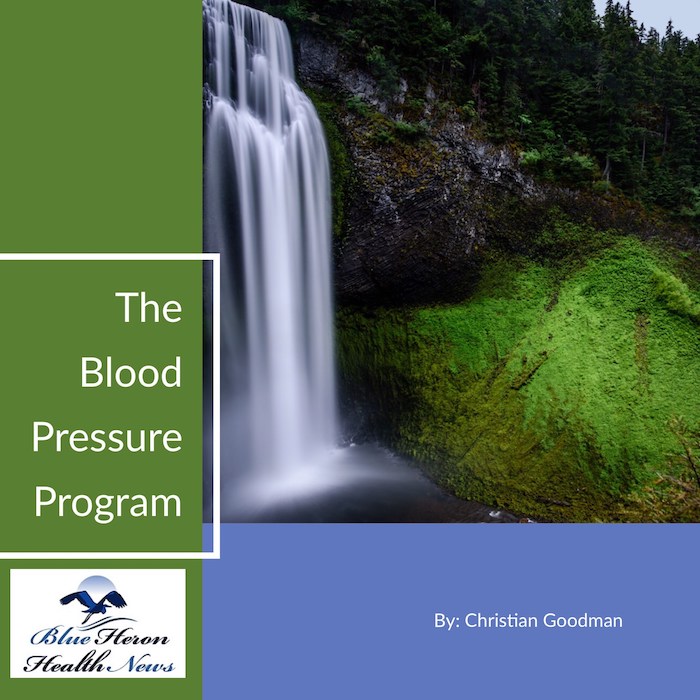The Bloodpressure Program™ By Christian Goodman The procedure is a very basic yet effective method to lessen the effects of high blood pressure. To some people, it sounds insane that just three workouts in a day can boost fitness levels and reduce blood pressure simultaneously. The knowledge and research gained in this blood pressure program were really impressive.
Blood Pressure and the Management of Septic Shock
Blood Pressure and the Management of Septic Shock
Septic shock is a life-threatening condition resulting from severe infection, characterized by persistent hypotension (low blood pressure) despite adequate fluid resuscitation. It occurs when the body’s response to infection leads to widespread inflammation, vasodilation, and maldistribution of blood flow, which ultimately reduces tissue perfusion and oxygen delivery to vital organs. Managing blood pressure in septic shock is critical to prevent multi-organ failure, improve survival rates, and ensure that tissues receive adequate oxygen and nutrients.
1. Pathophysiology of Septic Shock and Blood Pressure Changes
In septic shock, the body’s immune response to infection leads to the release of pro-inflammatory cytokines (e.g., tumor necrosis factor and interleukins), which cause vasodilation and increased vascular permeability. The resulting effects include:
- Decreased systemic vascular resistance (SVR): Widespread vasodilation lowers the ability of blood vessels to maintain normal pressure.
- Increased capillary leak: Fluid leaks out of blood vessels, contributing to hypovolemia and further lowering blood pressure.
- Myocardial dysfunction: Inflammatory mediators can impair the heart’s ability to pump effectively, contributing to decreased cardiac output and blood pressure.
- Impaired microcirculation: Blood flow is redirected from less vital organs to essential organs like the brain and heart, but tissue ischemia in less-perfused organs can still occur.
The hallmark of septic shock is persistent hypotension despite adequate fluid resuscitation, which requires careful management of blood pressure to restore organ perfusion and prevent irreversible damage.
2. Goals of Blood Pressure Management in Septic Shock
The primary goal of managing blood pressure in septic shock is to restore adequate perfusion to critical organs, particularly the heart, brain, and kidneys. In addition to blood pressure, attention is given to:
- Mean arterial pressure (MAP): Maintaining a MAP of at least 65 mmHg is commonly targeted to ensure adequate perfusion of vital organs.
- Tissue perfusion: Restoring sufficient blood flow to organs to prevent organ failure.
- Oxygen delivery: Ensuring that enough oxygen reaches tissues to prevent hypoxia.
Nurses and healthcare providers monitor several parameters, such as urine output, lactate levels, and central venous oxygen saturation (ScvO2), to assess tissue perfusion and guide blood pressure management.
3. Initial Management of Septic Shock and Blood Pressure Support
The management of septic shock includes several key interventions to stabilize blood pressure and improve overall circulatory status:
A. Fluid Resuscitation
The first step in managing septic shock is fluid resuscitation. Large volumes of intravenous (IV) crystalloid fluids (e.g., normal saline or lactated Ringer’s solution) are typically administered to restore circulating volume and increase blood pressure. The goal is to achieve a central venous pressure (CVP) of 8–12 mmHg and improve the MAP.
- Aggressive Fluid Administration: In the early stages of septic shock, fluid resuscitation is often the most important intervention to increase preload, thereby improving cardiac output and blood pressure.
- Colloids vs. Crystalloids: Colloid solutions (e.g., albumin) are sometimes used, especially in cases where crystalloids are insufficient, but the general consensus is that crystalloids are preferred for initial fluid resuscitation.
B. Vasopressor Therapy
If blood pressure remains low despite adequate fluid resuscitation, vasopressors are initiated. These medications help increase vascular tone and raise systemic vascular resistance, thereby improving blood pressure and organ perfusion. The goal is to maintain a MAP ≥ 65 mmHg.
Common vasopressors used in septic shock include:
- Norepinephrine: It is the first-line vasopressor, as it has a strong alpha-adrenergic effect (causing vasoconstriction) and beta-adrenergic effect (increasing heart rate and cardiac output).
- Dopamine: Often used in certain situations, though it has a broader effect and can cause arrhythmias.
- Phenylephrine: A pure alpha-agonist that causes vasoconstriction and is used when norepinephrine alone is insufficient.
- Vasopressin: Can be used as an adjunct to norepinephrine in severe septic shock, especially in patients with high lactate levels or inadequate response to other vasopressors.
C. Inotropic Support
In cases where there is significant myocardial dysfunction (e.g., cardiogenic shock), inotropic agents like dobutamine may be used to improve heart function and increase cardiac output. However, the use of inotropes is typically reserved for patients with low cardiac output and evidence of inadequate perfusion, despite adequate fluid resuscitation and vasopressor support.
D. Antibiotic Therapy
In addition to stabilizing blood pressure, the cornerstone of septic shock management is the early administration of broad-spectrum antibiotics. Empiric therapy should be started as soon as possible and tailored once the specific pathogen is identified. Early treatment of the underlying infection is critical to preventing further inflammatory responses and BP instability.
4. Monitoring Blood Pressure and Hemodynamics
Blood pressure and other hemodynamic parameters are continuously monitored in septic shock patients to assess the effectiveness of interventions:
- Continuous Arterial BP Monitoring: Invasive monitoring using an arterial catheter allows real-time measurement of blood pressure and is crucial for titrating vasopressors.
- MAP Target: Maintaining a MAP ≥ 65 mmHg is the general goal for optimizing organ perfusion in septic shock.
- Urine Output: Low urine output may signal inadequate perfusion and indicate the need for further interventions (e.g., renal replacement therapy).
- Lactate Levels: Elevated lactate levels (> 2 mmol/L) are a sign of tissue hypoxia and indicate the need for aggressive resuscitation and possibly vasopressor therapy.
5. Adjunctive Therapies
While the focus of septic shock management is on fluid resuscitation, vasopressors, and antibiotics, additional therapies may be employed based on the patient’s condition:
- Corticosteroids: In some patients, especially those with adrenal insufficiency, hydrocortisone may be used to improve response to vasopressors.
- Blood Transfusion: In cases of anemia or significant blood loss, transfusions with packed red blood cells may be necessary to restore adequate oxygen-carrying capacity and support blood pressure.
- Glycemic Control: Tight blood glucose control is important to reduce the inflammatory response and improve outcomes in septic shock.
- Early Goal-Directed Therapy (EGDT): Although EGDT has fallen out of favor in some settings, some protocols still use it to guide fluid resuscitation, vasopressor therapy, and hemodynamic optimization based on early measurements of lactate, CVP, and MAP.
6. Weaning from Vasopressors
Once the patient’s condition begins to improve, blood pressure may stabilize, and the need for vasopressor therapy can decrease. Gradual weaning of vasopressors is essential to avoid sudden drops in BP. Nurses closely monitor blood pressure, heart rate, and other hemodynamic markers during this process.
7. Conclusion
Managing blood pressure in septic shock is a critical aspect of treatment aimed at preventing organ failure and improving survival. The approach involves aggressive fluid resuscitation, appropriate use of vasopressors, early antibiotic administration, and continuous monitoring of hemodynamics. Nurses and healthcare providers must work together to adjust interventions based on the patient’s evolving condition, ensuring the maintenance of adequate perfusion to vital organs while preventing complications associated with both hypotension and hypertension.

The Bloodpressure Program™ By Christian Goodman The procedure is a very basic yet effective method to lessen the effects of high blood pressure. To some people, it sounds insane that just three workouts in a day can boost fitness levels and reduce blood pressure simultaneously. The knowledge and research gained in this blood pressure program were really impressive.
